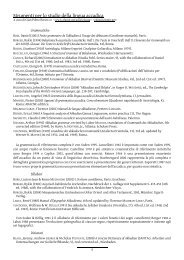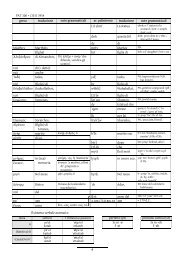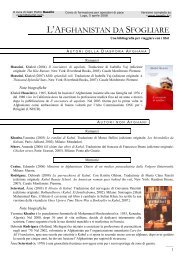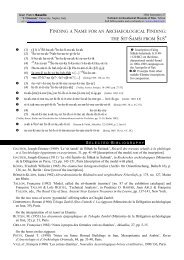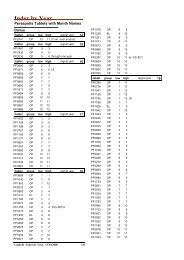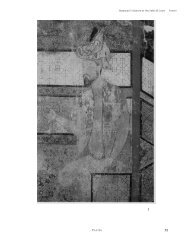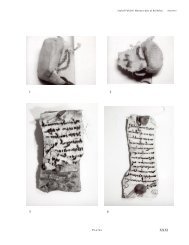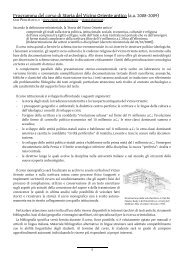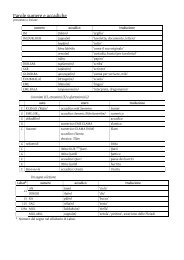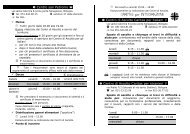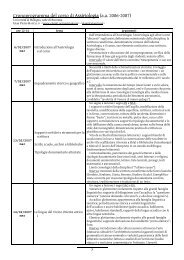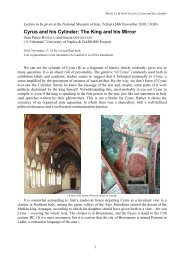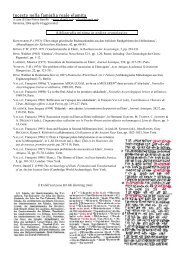Erstes Iranistisches Symposium - Elam.net
Erstes Iranistisches Symposium - Elam.net
Erstes Iranistisches Symposium - Elam.net
Create successful ePaper yourself
Turn your PDF publications into a flip-book with our unique Google optimized e-Paper software.
G.P. BASELLO Pre-Achaemenid Persians 2<br />
2005 09 20, 15:14<br />
KUR par-su-a, KUR par-su-aš, KUR par-su-maš: ‘An inscription by the Assyrian king Shalmaneser III, which was<br />
written around 843 B.C., mentions the region of Parsua’; ‘Somewhat later, at the end of the eighth century, the<br />
Assyrian text mention the country of Parsu(a)mash, which was situated somewhat east of the present-day city of<br />
Sulaimaniya; i.e., to the northeast of <strong>Elam</strong>’ (Dandamaev & Lukonin 1989: 3); Waters 1999: 100, footnote 7.<br />
KUR par-su-ma-aš in Weidner 1931-1932: 4.<br />
<strong>Elam</strong>ite administrative tablets from the Acropolis of Susa: 298 tablets, MDP 9, 1-87 and 89-298 (Scheil 1907,<br />
Jusifov 1963); MDP 11, 309 (Scheil 1911). MDP 9, 88 is a letter.<br />
Dating of the Acropolis tablets: 680 (Hinz 1987: 125-127) or 685 BC (Hinz & Koch 1987: 1327, ‘S’) according<br />
to HINZ; first quarter of the 6th century BC according to VALLAT (Vallat 1998a: 311); no earlier than the late 7th<br />
century BC according to STOLPER (Stolper 1984b: 8); ca. 650-550 according to DE MIROSCHEDJI (Miroschedji<br />
1982: 60ff), reign of Cyrus the Great and Cambyses according to CAMERON (Cameron 1948: 24, footnote 2). See<br />
also Steve 1986: 8, No. 2.<br />
Cyaxares in the Acropolis tablets: a Median anthroponym (Scheil 1907: 118; Cameron 1948: 24, footnote 2); the<br />
Median king Cyaxares (Hinz 1987: 126). MDP 9, 132:7: PAP BE ma-ak-iš-tur-ri du-iš; restored also in MDP 9,<br />
95:17: BE ma-a[k ...].<br />
Archaeological context of Acropolis tablets: found in 1900 by the French archaeologist Jacques DE MORGAN on<br />
the Acropolis of Susa, near the temple of Inšušinak built by will of Šutruk-Nahhunte II (717-699 BC) (Amiet 1967:<br />
27-29 and 1973: 4, footnote 1. See plan in Harper & al. 1992: 124, fig. 41)<br />
Biographical note on father SCHEIL: André-Salvini 1997.<br />
See Stolper 2004 for a brief introduction to <strong>Elam</strong>ite grammar.<br />
Additional note 2. The ‘Village perse-achéménide’<br />
The so-called ‘Village Perse-achéménide’, located on the western flanks of the ‘Ville des Artisans’, was considered proof of<br />
the existence of a Persian community settled in the neighbourhood of Susa already in the 8th century BC. To support this<br />
thesis, Ghirshman put forward a number of links between the oldest layers of the ‘Village Perse-achéménide’ I and Iron II sites<br />
comparatively late like Sialk VI and Giyan I (Ghirshman 1954, especially pp. 71-74). Stronach showed that the ‘Village’<br />
cannot be so ancient: it should be dated to the 6th century BC, preceded by an <strong>Elam</strong>ite occupation starting from ca. 625 BC<br />
(Stronach 1974: 244; also Steve 1986: 9 and Miroschedji 1981a: 38-39). According to Boucharlat, the only traces of an<br />
Achemenid occupation went back to the end of the Achemenid period, as showed by subsequent soundings (Boucharlat 1990:<br />
154; see also Dandamaev 1989: 2-3).<br />
Persians in the Acropolis tablets: Henkelman 2003a: 211-213; Persian: Waters 1999: 105-106.<br />
Iranian names in the Acropolis tablets: Scheil 1907, passim; Mayrhofer 1971; Hinz 1975; Zadok 1984a; Hinz &<br />
Koch 1987. Hinz 1987: 128: 65 anthroponym, 10% of the attested onomastics.<br />
Synopsis of the occurrences of parsa as collective designation:<br />
P type: MDP 9, 11 (Zampegir), 49 (Huri), 51 (Datiyana), 94 (Zampegir), 187 (Datiyana), 246 (Datiyana?), 281:20,<br />
281:29 (Datiyana);<br />
S type: MDP 9, 121;<br />
O type: MDP 9, 166:4, 166:25;<br />
fragmentary: MDP 9, 185, 233, 272 (S type?);<br />
[proper name: MDP 9, 47 (or S0 type?), 97 (or O type?), 117 (or S0 type?).]<br />
Unsak, second most attested collective designation (14 occurrences): Vallat 1992b.<br />
Additional note 3. Products related to the occurrences of Persian people<br />
Among the products related to the occurrences of Persian people, one can find kuktu, ‘overalls’, BABBAR.BABBAR ‘white’<br />
and dabantina ‘blue’, tukli tain ‘light-grey (i.e. made in wool [Hinz & Koch 1987: 268, s.v. ‘ta-in’]) clothing’, likkina another<br />
clothing, ri-tú.hu-el-ip perhaps a ‘skirt’, and weapons such as šukurrum ‘spears’, BAN ‘bows’ and sa-ah GI ‘arrow-heads’. The<br />
translations follows the (somewhat hypothetical) proposals by Hinz and Koch (1987; see also Hinz 1967).




